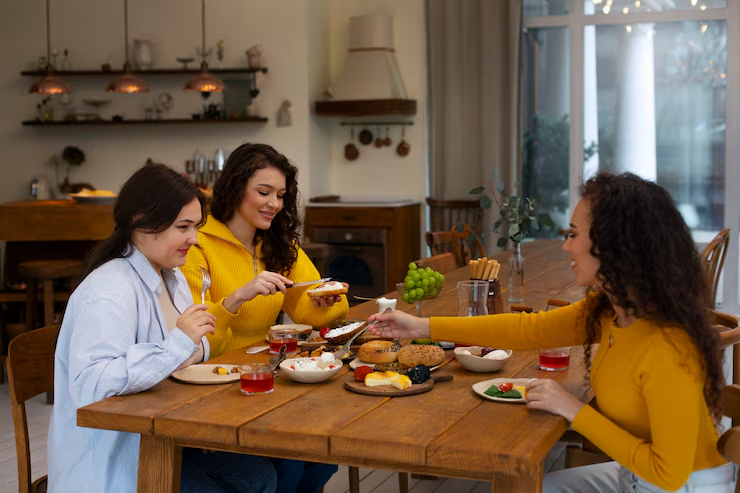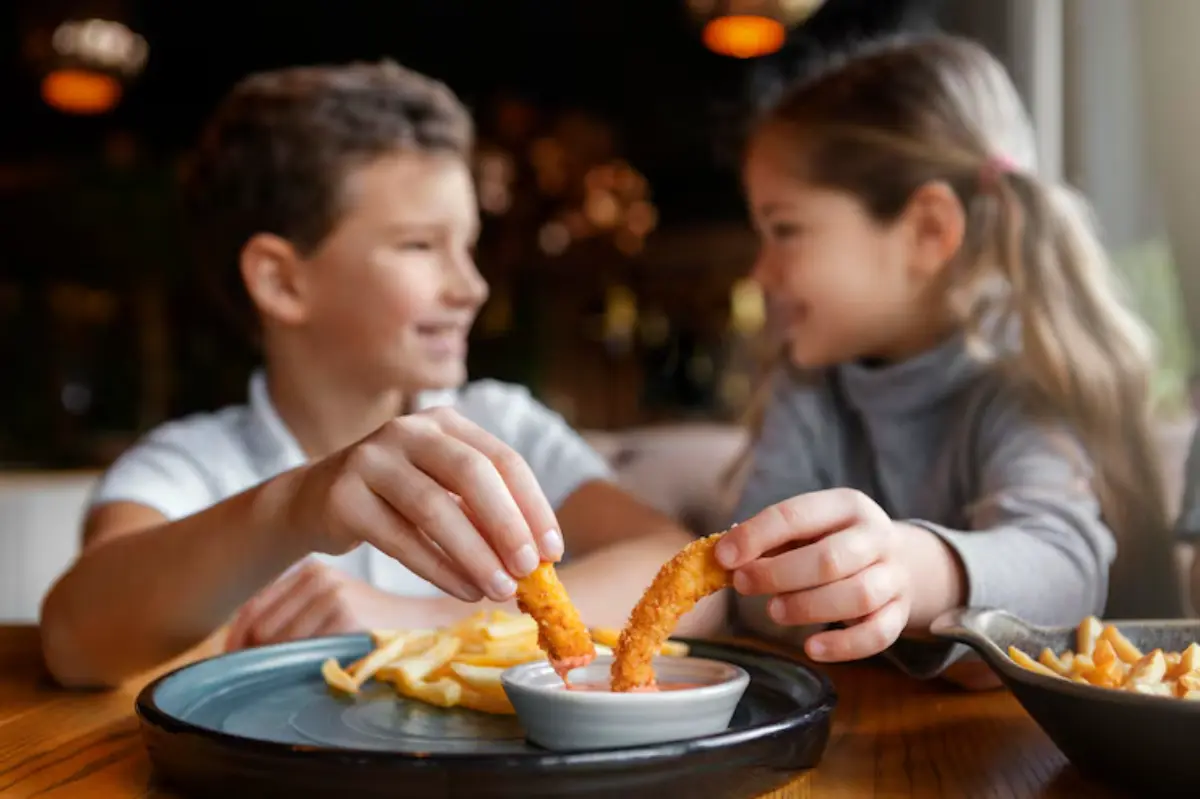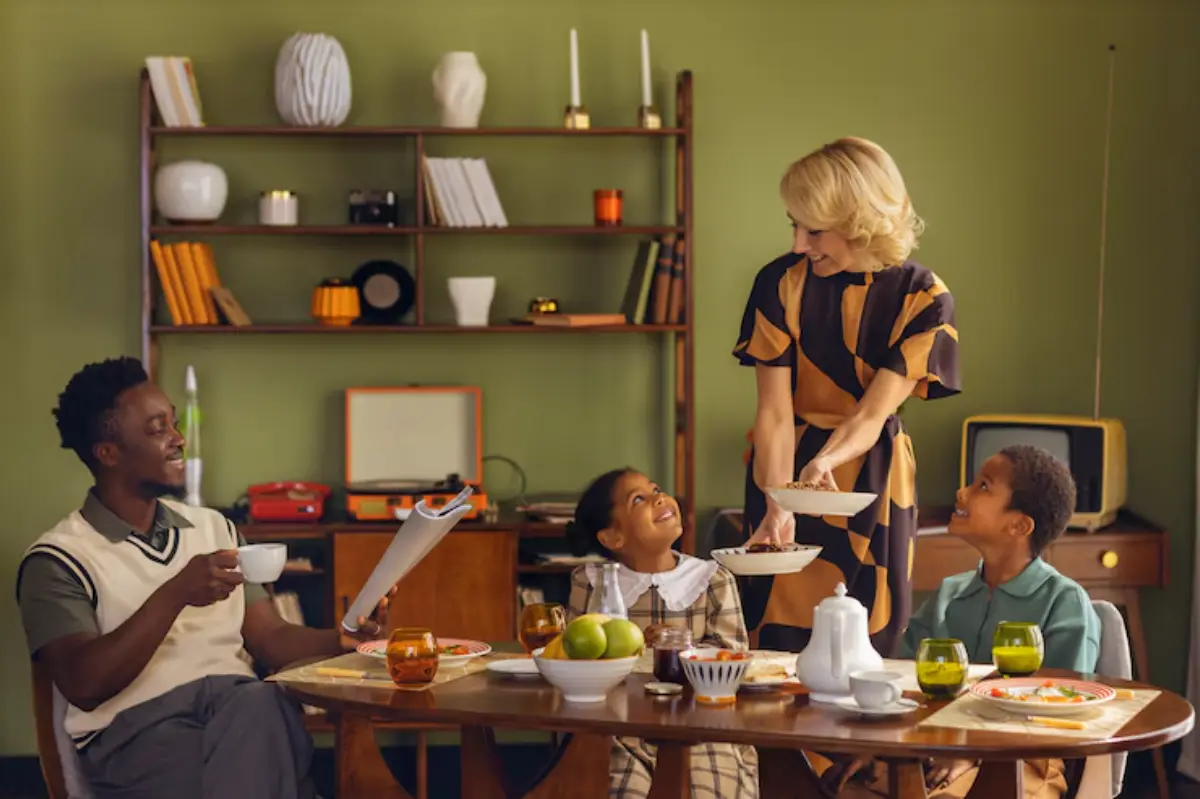
Teaching Culture Through Weekly Dinner Themes
What if learning about different cultures didn’t start in a textbook — but around your own kitchen table? Imagine a space where your family explores the world through food, one delicious bite at a time. That’s the magic of teaching culture through weekly dinner themes.
In a world that’s more connected than ever, helping children understand and respect different traditions is vital. And dinner is the perfect time to do it. With a little planning, your weekly menu can become an immersive journey into global cuisines, customs, and values. It’s more than a meal — it’s a chance to raise open-minded eaters and global citizens.
In this comprehensive guide, you’ll discover how to use family culture food ideas to engage your children in geography, history, and empathy. We’ll explore strategies for educational dinners that are fun, accessible, and packed with flavour — without adding stress to your weeknight routine. So, whether you’re a seasoned home cook or a pizza-night pro, there’s a world of opportunity waiting at your table.
Why Cultural Themed Meal Planning Matters
1. It Promotes Curiosity and Openness
Introducing foods from around the world sparks questions — and that’s where learning begins. Kids become naturally curious about why a dish is spicy, where the ingredients come from, or how people in other countries eat.
2. It Encourages Empathy and Respect
When children learn about how others celebrate, eat, and gather, it nurtures an understanding of different perspectives and traditions.
3. It Connects Family Members to Their Heritage
Themed meals can reconnect you to your own cultural roots or those of family members. Exploring your family tree through food makes the past deliciously present.
4. It’s an Engaging Way to Learn Geography and History
Talking about the countries, climates, or celebrations behind a meal naturally teaches key concepts. Pairing food with maps, photos, or music brings the topic to life.
5. It Builds Shared Memories and Traditions
Just like Taco Tuesdays & Pizza Fridays, cultural dinners can become an eagerly anticipated part of your family’s weekly rhythm.
Start a Weekly Culture Night at Home
Pick a Day That Works
Choose a consistent day — Sunday dinners or midweek Wednesdays are popular. Keep it flexible, especially during busy weeks.
Choose a Country or Region
Let each family member take turns picking a country to explore.
- Spin a globe
- Draw flags from a jar
- Follow the alphabet: Argentina, Brazil, China…
Plan a Simple Menu
Choose one or two dishes that reflect that culture — a main and a side or dessert. Use pantry staples where possible.
Add Cultural Touches
Enhance the experience with:
- Traditional music
- A short story or fun fact about the country
- Flags, printed photos, or even a short language lesson
Cook and Eat Together
Involve everyone in age-appropriate ways:
- Kids can mix sauces or set the table
- Teens can research and explain a dish’s origin
Family Culture Food Theme Ideas
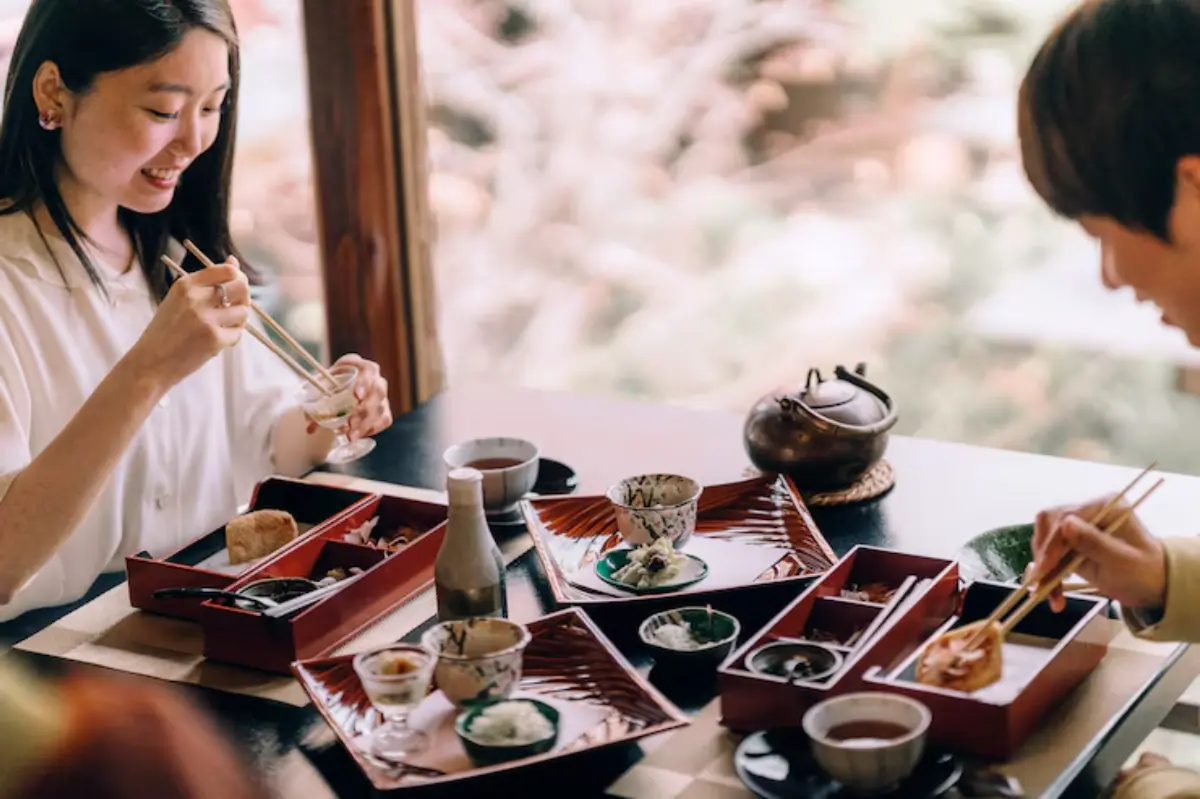
1. Italy Night
- Dish: Spaghetti Carbonara or Margherita Pizza
- Learning Focus: Renaissance art, Italian landmarks
- Fun Add-On: Make menus in Italian or watch a short video about Rome
2. Japan Night
- Dish: Teriyaki chicken with rice or sushi rolls
- Learning Focus: School life in Japan, origami folding
- Fun Add-On: Try eating with chopsticks and saying itadakimasu before eating
3. Mexico Night
- Dish: Tacos or enchiladas
- Learning Focus: Day of the Dead, Aztec history
- Fun Add-On: Create paper marigolds or decorate sugar skulls
4. India Night
- Dish: Butter chicken or chickpea curry
- Learning Focus: Diwali, Holi, or regional languages
- Fun Add-On: Draw rangoli patterns or learn to say “namaste”
5. China Night
- Dish: Fried rice or dumplings
- Learning Focus: Lunar New Year, pandas, Great Wall
- Fun Add-On: Make red lanterns or give out red envelopes with kind notes
6. France Night
- Dish: Crêpes or ratatouille
- Learning Focus: Eiffel Tower, French words for food
- Fun Add-On: Write your menu in French or listen to French café music
7. South Africa Night
- Dish: Bobotie with yellow rice
- Learning Focus: Nelson Mandela, wildlife
- Fun Add-On: Watch a wildlife documentary or make animal masks
8. Brazil Night
- Dish: Feijoada (black bean stew) or pão de queijo (cheese bread)
- Learning Focus: Carnival, rainforest ecosystems
- Fun Add-On: Create your own mini parade with music and costumes
9. Morocco Night
- Dish: Couscous with vegetables and lamb or chickpeas
- Learning Focus: Desert geography, souks (markets)
- Fun Add-On: Use scarves for decor and light candles or lanterns
For more global menu inspiration, visit Easy International-Themed Family Dinners.
How to Involve Kids in Cultural Meal Planning

Let Them Lead
Give your children ownership by letting them choose a country and help plan the meal.
Assign Weekly Roles:
- Junior Chef: Helps cook
- Culture Captain: Presents one fact or story
- Decorator: Sets the theme with drawings, flags, or music
Use a Cultural Meal Passport
Create a fun binder where kids can:
- Draw the flag
- Write what they ate
- Add a memory or new word they learned
Incorporate Media
Pair food with:
- Children’s books (e.g. “Lailah’s Lunchbox” for Ramadan)
- YouTube travel clips
- Age-appropriate documentaries
Tips for Themed Meal Planning on a Budget
- Use pantry staples: rice, beans, pasta, lentils
- Adapt recipes to what you already have
- Explore budget grocery stores for international aisles
- Skip rare spices and use simplified blends
- Choose one course instead of a full three-course meal
Example: Instead of buying ghee for Indian night, use butter and a splash of oil. Instead of sushi-grade fish, make veggie sushi rolls.
Making It Inclusive: Mixed Heritage and Multicultural Homes
If your family has more than one cultural background, theme nights are a beautiful way to honour that diversity.
- Cook dishes from both backgrounds side by side
- Alternate weeks between cultures
- Explore shared ingredients and traditions
Combining Culture Nights with Celebrations
Link your cultural dinners to:
- Holidays: Lunar New Year, Eid, Bastille Day, Juneteenth
- Heritage months: Black History Month, Asian American & Pacific Islander Month
- Family events: Anniversaries, birthdays with a cultural twist
Turn a simple dinner into a mini festival!
What You’re Really Teaching at the Table
These aren’t just themed meals — they’re tools for teaching:
Geography:
Locate countries on a map before dinner.
Language:
Learn greetings, food terms, or common phrases.
History:
Talk about why certain dishes exist (e.g. survival foods, trade routes, colonisation).
Social Skills:
Patience, gratitude, and sharing are all part of the meal.
Practical Tools for Themed Meal Planning
- Printable World Map Placemats: Colour in where you “travel” each week
- Family Food Journal: Log meals, memories, and kid reviews
- Recipe Rotation List: Save your hits and plan for repeats
- Spotify Playlists by Country: Set the tone with music
Feed Their Curiosity, One Plate at a Time
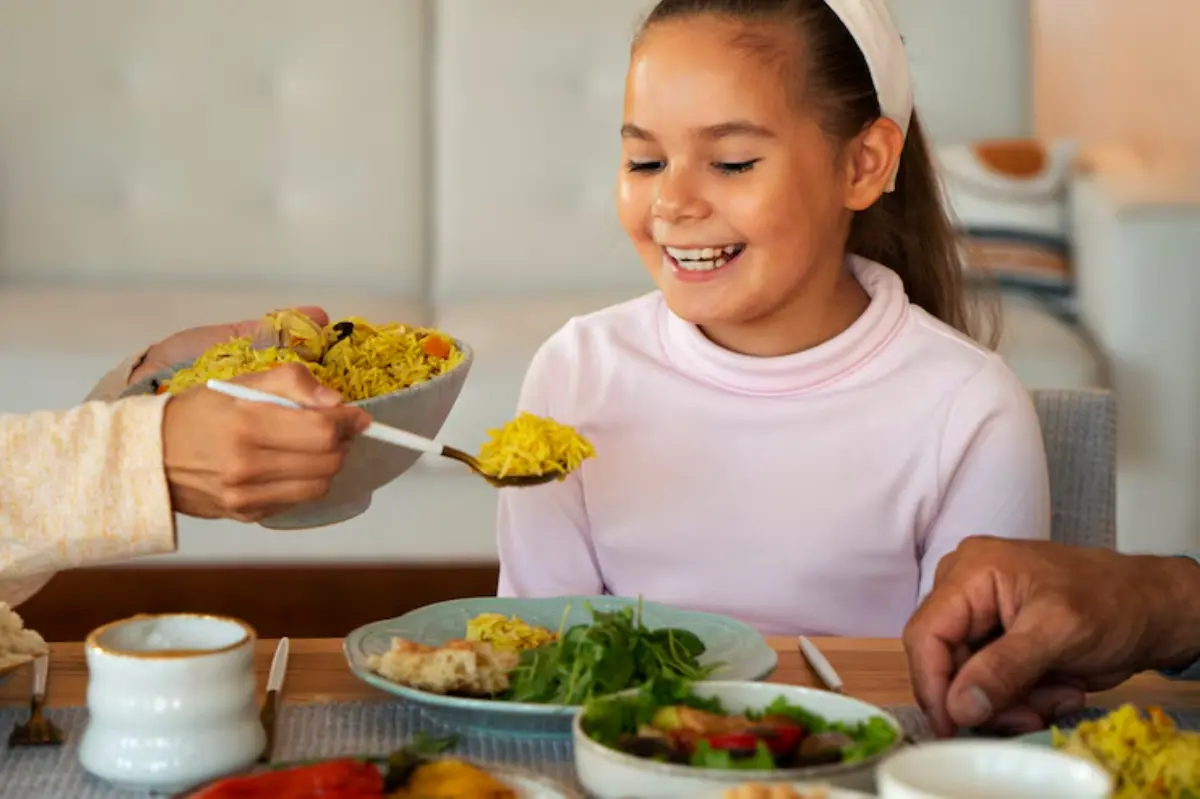
With a little imagination and intention, your dinner table can become a classroom, a celebration, and a journey around the world. Weekly themed meal planning isn’t just about what’s on the plate — it’s about sparking wonder, promoting inclusivity, and making memories.
Whether you’re celebrating your own heritage or exploring new ones, family culture food connects hearts and minds. Through each bite and every story, your children learn that difference is something to be embraced, not feared.
